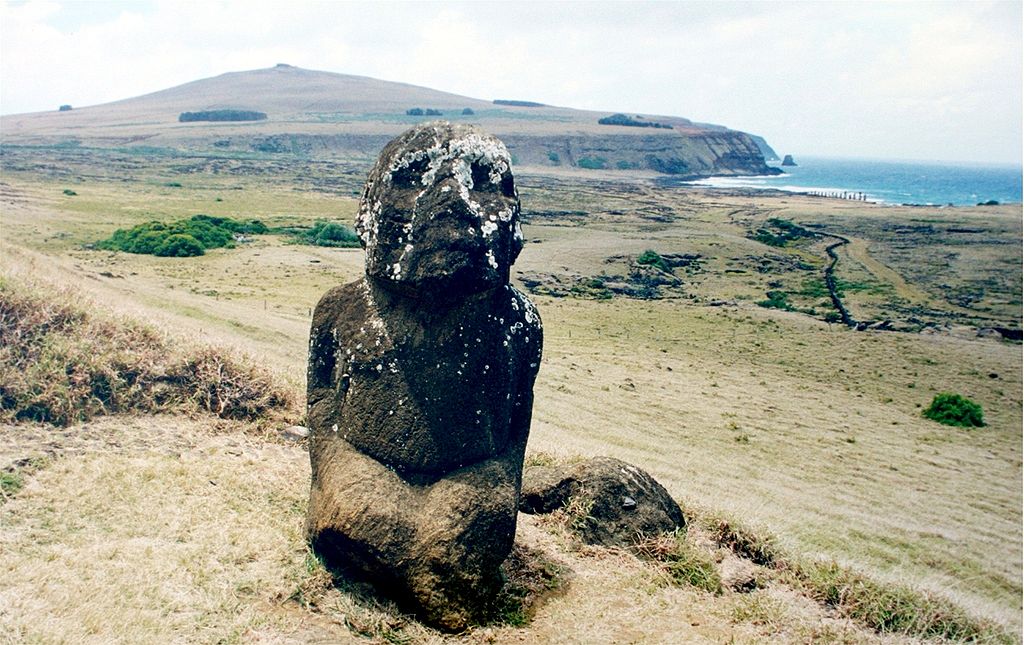“Though moai are whole-body statues, they are commonly referred to as ‘Easter Island heads.’ This is partly because of the disproportionate size of most moai heads and partly because, from the invention of photography until the 1950s, the only moai standing on the island were the statues on the slopes of Rano Raraku, many of which are buried to their shoulder.
Moai are monolithic human figures carved from rock on the Chilean Polynesian island of Easter Island between the years 1250 and 1500. Nearly half are still at Rano Raraku, the main moai quarry, but hundreds were transported from there and set on stone platforms called ahu around the island’s perimeter. Almost all moai have overly large heads three-fifths the size of their bodies. The moai are chiefly the living faces (aringa ora) of deified ancestors (aringa ora ata tepuna). The statues still gazed inland across their clan lands when Europeans first visited the island, but most would be cast down during later conflicts between clans. The production and transportation of the 887 statues are considered remarkable creative and physical feats. The tallest moai erected, called Paro, was almost 10 meters (33 ft.) high and weighed 82 tons; the heaviest erected was a shorter but squatter moai at Ahu Tongariki, weighing 86 tons; and one unfinished sculpture, if completed, would have been approximately 21 meters (69 ft.) tall with a weight of about 270 tons” (source).
“To the surprise of many visitors to Easter Island, the famed statues have bodies! The dirt and detritus partially burying the statues was washed down from above and not deliberately placed there to bury, protect, or support the statues, and the statues were erected in place and stand on stone pavements. Post holes were cut into bedrock to support upright tree trunks, rope guides were cut into bedrock around the post holes, and posts, ropes, stones, and different types of stone tools were all used to carve and raise the statues upright. Rano Raraku quarry, within which 95% of the over 1,000 Easter Island stone statues was carved, is a massive crater of consolidated volcanic ash surrounding an interior, reed-filled lake. About half of the total number of statues recorded to date is still within the quarry zone. Some 150 statues stand upright on the interior and exterior slopes of Rano Raraku. They are buried to varying depths and appear often as heads only. While weathered and worn by centuries of exposure to the elements, many of them are still very beautiful.
Rano Raraku was first reported to the outside world in 1868 by officers of HMS Topaze. The world was fascinated, and many sketches, essays, newspaper articles, and books were published describing the statues embedded in the slopes as ‘heads.’ Over 90 excavations in Rano Raraku since that time exposed the torsos of many statues. Katherine and William Scoresby Routledge of the Mana Expedition to Easter Island, 1914-15 published photos of their own digs, illustrating the bodies of many statues. In 1954-55, Thor Heyerdahl and his Norwegian Archaeological Expedition to Easter Island excavated others, further documenting the existence of complete, but partially buried, statues” (Jo Anne Van Tilburg, Ph.D. Director, EISP, May 22nd, 2012; source).





